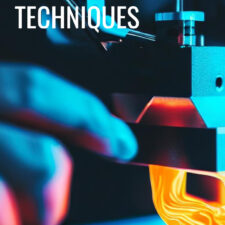3D printing has been around for quite some time now and has revolutionized the manufacturing and prototyping industry. With its increasing popularity, new 3D printing techniques have emerged to meet the ever-evolving needs of the industry. In this article, we will look at the best 3D printing techniques in the market today.
Fused Deposition Modeling (FDM)
Fused Deposition Modeling (FDM) is the most popular 3D printing technique. It works by melting filament material and extruding it layer by layer to form the final product. FDM is affordable, easy to use, and produces high-quality prints. It is ideal for creating large parts, functional prototypes, and figurines.
Stereolithography (SLA)
Stereolithography (SLA) is a 3D printing technique that uses a UV laser to solidify liquid resin layer by layer. SLA produces highly accurate prints with a smooth surface finish. It is ideal for creating detailed parts, jewelry, and dental molds. However, SLA printers can be expensive, and resin materials are costly.
Selective Laser Sintering (SLS)
Selective Laser Sintering (SLS) is a 3D printing technique that uses a laser to sinter powdered material layer by layer. SLS can print with a wide range of materials, including nylon, TPU, and metal powders. SLS produces strong and durable parts with high accuracy and detail. It is ideal for creating functional parts, complex geometries, and small batches of products. However, SLS printers can be expensive, and the printing process can be slow.
Digital Light Processing (DLP)
Digital Light Processing (DLP) is a 3D printing technique that uses a projector to cure liquid resin layer by layer. DLP produces highly detailed prints with a smooth surface finish. It is ideal for creating dental models, figurines, and jewelry. However, DLP printers can be expensive, and resin materials are costly.
Binder Jetting
Binder Jetting is a 3D printing technique that uses a liquid binding agent to bind powdered material layer by layer. Binder Jetting is ideal for creating large parts, decorative objects, and architectural models. However, the printing process can be slow, and the final product may not be as strong and durable as other 3D printing techniques.
Material Jetting
Material Jetting is a 3D printing technique that uses inkjet printheads to jet photopolymer material layer by layer. Material Jetting can produce high-quality prints with a smooth surface finish and high accuracy. It is ideal for creating dental models, jewelry, and figurines. However, the printing process can be slow and expensive, and the final product may not be as strong and durable as other 3D printing techniques.
Conclusion
In conclusion, 3D printing technology has come a long way, and there are several techniques available in the market today. Each technique has its own strengths and weaknesses. FDM is affordable and easy to use, while SLA produces highly accurate prints with a smooth surface finish. SLS can print with a wide range of materials, and DLP produces highly detailed prints. Binder Jetting is ideal for creating large parts, and Material Jetting can produce high-quality prints with a smooth surface finish. In choosing the best 3D printing technique, it is essential to consider the cost, material compatibility, accuracy, and printing speed.

